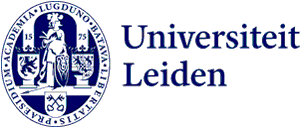
Cattle, rather than geometric shapes, determine how the Hamar see the world
Sara Petrollino, a university lecturer in linguistics, strongly believes that language influences the way we see the world. An NWO Open Competition (XS) grant will enable her to test this hypothesis among the Ethiopian Hamar people. ‘The idea that everyone thinks in geometric shapes is culturally determined.’
‘I’m interested in the relationship between language, culture and cognition,’ says Petrollino. ‘The question I’m trying to answer with this project is, “How do the culture we live in and the language we speak influence the way we understand and see the world around us?”’
No nouns for shape
From the office cabinet behind her, she takes a cardboard box containing different geometrically shaped wooden figures. ‘When I show you one of these, you immediately call it a cylinder or a pyramid. It doesn’t matter whether you speak English, Dutch or Italian, because our languages are grounded in Euclidean geometry; so linguists assumed for a long time that it’s universal to use nouns referring to geometrical shapes to talk about the shape of objects. But more recent research shows that there are languages which don’t have any nouns for talking about these abstract geometrical shapes in the English sense.’
These languages use other grammatical domains to describe shapes and dimensions. ‘We know, for example, that the Ethiopian Hamar people use the gender system to indicate size. If a speaker uses the feminine version of “house”, it means the house is big. If a speaker uses the masculine variant, the same word means something like small and ugly.’
The central role of cattle
This gave Petrollino the idea of delving deeper into how the Hamar describe shapes and dimensions. ‘Cattle are very important in their culture, so my hypothesis is that the model and the visual characteristics of cattle are used for what we would call “shape” in English. This hypothesis isn’t completely new: in my previous project, I already showed that it’s the case for colours and patterns. If I had to describe the colour of your dress in the Hamar language, for example, I would use a word that describes the colour of a particular cow.’ If I had to describe the circular and smooth edges of a cylinder or a sphere, I would use the Hamar word describing a horn-less cow.
Petrollino will travel to Ethiopia in the next academic year with a suitcase full of cattle images and shape objects. ‘The Hamar people have a very rich vocabulary to talk about the shape of the horns, or the shape of the cattle ears. They probably also use them to talk about the shape of other things.’
Going home
She hopes her results could eventually be a start for a bigger project. ‘If this turns out as I hope, I will probably apply for a Vidi grant. In the cognitive sciences, we’re seeing more and more studies showing that culture and language do indeed affect the way in which people make sense of the environment. I would like to add to these the linguistic facts from an under-studied culture.’
But for now, she is thrilled at the prospect of ‘going home’. ‘I’ve been working with this community for many years. They’ve become my friends and family. It makes me happy to be going back and reconnecting with them.’
